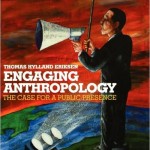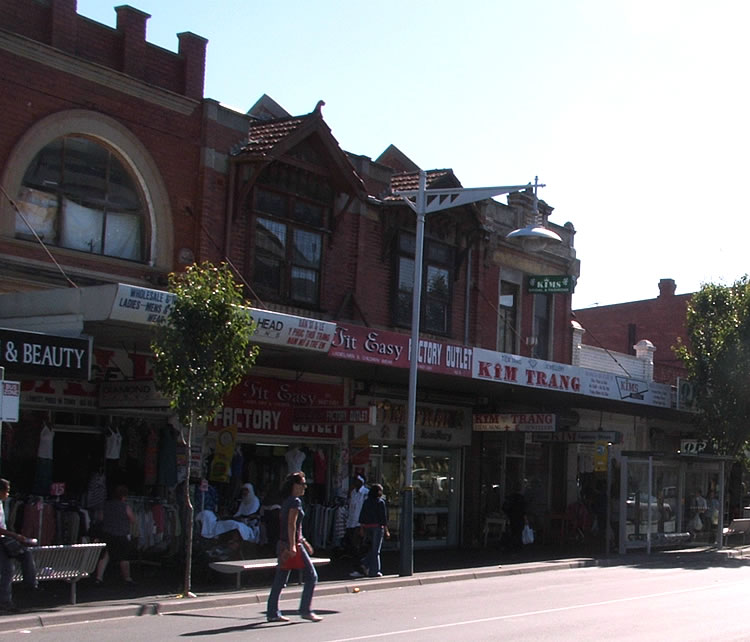Diversity vs. Difference in Urban Placemaking
 One of my favorite anthropologists is the Norwegian Thomas Hylland Eriksen. His book Engaging Anthropology was a big hit in my senior capstone seminar on public anthropology. I recently came across his essay “Diversity versus Difference: Neoliberalism in the Minority Debate.” I was struck by his distinction between diversity and difference because these terms are typically equated with one another in discussions of urban planning and placemaking. Or, one is subsumed by the other; e.g., Leonie Sandercock’s view that cultural diversity is one of several dimensions of difference that also include race, class, and gender. Eriksen teases apart diversity and difference in the following way:
One of my favorite anthropologists is the Norwegian Thomas Hylland Eriksen. His book Engaging Anthropology was a big hit in my senior capstone seminar on public anthropology. I recently came across his essay “Diversity versus Difference: Neoliberalism in the Minority Debate.” I was struck by his distinction between diversity and difference because these terms are typically equated with one another in discussions of urban planning and placemaking. Or, one is subsumed by the other; e.g., Leonie Sandercock’s view that cultural diversity is one of several dimensions of difference that also include race, class, and gender. Eriksen teases apart diversity and difference in the following way:
I propose a simple contrast between diversity and difference in order to highlight two fundamentally distinctive ways of dealing with, and identifying, cultural variation. Bluntly put, there is considerable support for diversity in the public sphere, while difference is increasingly seen as a main cause of social problems associated with immigrants and their descendants…Diversity should be taken to mean largely aesthetic, politically and morally neutral expressions of cultural difference. Difference, by contrast, refers to morally objectionable or at least questionable notions and practices in a minority group or category, that is to say notions and practices which are held to (i) create conflicts through direct contact with majorities who hold other notions, (ii) weaken social solidarity in the country and thereby the legitimacy of the political and welfare systems, and (iii) lead to unacceptable violations of human rights within the minority groups. Interestingly, politicians and other public figures often praise the immigrants for ‘enriching’ the national culture. At the same time, they may worry about [immigrant values and practices] as impediments to national cohesion. This seeming contradiction indicates that cultural difference is not just one thing. Broadly speaking, we may state that diversity is seen as a good thing, while difference is not.
These ideas have been put to provocative use by the Australian anthropologist Maree Pardy in her manuscript “Multicultural Incarnations: Race, Class, and Urban Renewal.” Pardy uses the concept of diversity to describe multicultural “aesthetics” including rituals, foods, folktales, legends, arts, crafts, and festivals. Differences are understood in terms of habits like (as Eriksen details) the wearing of the hijab, or the place-making practices of coffee-drinking young men who populate the African street cafes of Melbourne’s suburbs. Cities worldwide are strategically marketing cultural diversity as a way to “brand” themselves as tolerant and attractive to young, middle class, upwardly mobile professionals. Cities trumpet their diversity as away to create consumption opportunities and sell a lifestyle. It’s all part of cosmopolitan image-building or what Pardy terms display. On the other hand, cities worry about—and often fear—differences like those mentioned above, especially after 9/11 and the bombings in London and Madrid. For Pardy the discourse of urban renewal today privileges diversity over difference. The consequences are increased investment in conditions that enhance business and services for the middle class, and associated neglect of what Pardy terms dwelling: the relations between people and the spaces they inhabit. The multicultural city, in her view, is today a site of display rather than a site of dwelling.
I take Pardy’s position to broadly align with that taken by Phil Wood and Charles Landry in their important book The Intercultural City. The book is subtitled “Planning for Diversity Advantage”, but the authors seem to implicitly respect Eriksen’s distinction between diversity and difference. Specifically, Wood and Landry see the outward signs of multiculturalism and business diversity evident in many British cities and other cities worldwide—e.g., ethnic-themed restaurants, combined kebab/curry/burger joints, shop signs, and other associated “cultural aesthetics”—as superficial “cultural cross-dressing” that doesn’t serve the project of intercultural placemaking even as it speaks to the resilience and adaptability of immigrant culture. Alternatively, they call for an increased cultural literacy among urban planners that’s sensitive to differences in everyday practices and the implications of these practices for modifying the “basic building blocks of the city.” Included among these building blocks are street frontages, building heights, set-backs, pavement widths, turning circles, number and size of windows, sight lines, materials, color, light, and water.
Mohammad Qadeer takes a similarly nuanced view in his essay “What is This Thing Called Multicultural Planning?” For Qadeer, sensitivity to different cultural practices requires accommodations in housing, land use, transportation, and basic services. In other words, provisions must at least be considered for what Pardy calls dwelling. With respect to private/domestic space provisions might be made for large, multigenerational families (especially in subsidized housing), kosher kitchens, multiple kitchens, altars, particular orientations to space (e.g., towards Mecca), separations of space (e.g., for cultures with menstrual taboos), etc. With respect to public space provisions might be made for the different requirements of religious houses (e.g., their siting), sporting activities (the shape/size/quality of playing fields), community festivals (the size/quality of public gathering and parade/processional space), and various informal economies (markets, bazaars, street vendors, etc.). And then there’s the matter of the different cultural uses of water.
Environmental context will obviously rule out some forms of construction. There can also be strong convergences between cultural groups in terms of preferences for certain kinds and quality of housing, public space, and amenities. There are, after all, everyday practices that unite cultures rather than simply divide them. The point made by Qadeer and others is that up to now urban planning in most parts of the world has been reactive rather than proactive, and placemaking governed by a particular set of “dominant culture” values and norms. It might be time to engage in more proactive planning in the United States given the “tipping point” that’s just been reached in the pattern of minority births, and the likelihood that cities in America and elsewhere will continue to get more demographically diverse. In short, Qadeer is very persuasive in casting intercultural placemaking as less a “distinct genre” of planning (one that only pointy-headed liberal academics could love) than a pragmatic “strategy of making reasonable accommodation” for cultural minorities; i.e., a culturally-responsive practice.
2 Comments

Pingback: UX for the city | AESOP Young Academics